Content
A strong bee colony produces marketable honey and several layerings over the course of a season. They buy it for their apiary in the spring. By the time of purchase, at least a month must have passed from the flight. During this time, the process of changing bees takes place. Based on the state of the bee colony, it is easier to understand whether the queen is good or bad. You can keep 3 bee families on your summer cottage.
What is a “bee colony”?
In spring and summer, a bee colony should contain 1 fertile queen, from 20 to 80 thousand workers, 1-2 thousand drones and brood from 8 to 9 frames. There should be 12 frames in total. In beekeeping, buying a bee package is considered the simplest way to develop a bee colony. According to GOST 20728-75, it should include:
- bees – 1.2 kg;
- brood frames (300 mm) – at least 2 pcs.;
- queen bee – 1 pc.;
- feed – 3 kg;
- packaging for transportation.
How does a bee colony work?
For a full life and reproduction in the hive there must be a complete composition of the bee family.A novice beekeeper should have an idea of the structure of the bee colony and the functions of individuals. The queen reproduces offspring. Externally, it differs from other insects:
- the size of the body - its length can reach 30 mm;
- greater than that of working individuals, it depends on the breed, and can reach up to 300 mg;
- they do not have baskets on their paws in which workers collect pollen.
Queens have no wax glands, and their eyes are poorly developed. The life of the entire highly organized bee colony is built around the queen. Usually there is only one per hive (bee colony). There are many worker bees in bee colonies, numbering in the thousands. Many tasks related to the life support of the bee colony inside and outside the hive are carried out by them:
- build honeycombs;
- feed larvae, drones, queen;
- fly out to collect pollen and nectar;
- warm the frames with brood, maintain the desired air temperature in the hive;
- carry out cleaning of honeycomb cells.
Drones are obligatory members of the bee family. These insects are males, their role in the bee colony is one - fertilization of eggs, which occurs during their mating with the queen. Due to their purpose, they are visually different from the females living in the hive. The drone has no stinger and a small proboscis. It is impossible for them to collect pollen from a flower. The dimensions of the male are larger than those of working females:
- average drone weight – 260 mg;
- body size – 17 mm.
The drones find the female (queen) by the smell of the uterine substance (pheromone). They sense it from a great distance. The drones are fed by workers. Over the summer they eat almost 50 kg of honey. During summer cold snaps, they can warm the brood (eggs, larvae) inside the hive, gathering in groups near the cells.
How are responsibilities distributed between individuals in a bee colony?
In bee colonies, a strict hierarchy is observed.The work process, continuously flowing inside and outside the hive, is distributed strictly by age. Young bees, whose age does not exceed 10 days, bear all the family work on the hive:
- are engaged in preparing the vacated cells in the honeycombs for new clutches of eggs (cleaning, polishing);
- maintain the desired temperature of the brood, while they sit on the surface of the frames or slowly move along them.
Nurse bees look after the brood. Individuals enter this status after they have formed special glands that produce royal jelly. Feeding glands are located on the head. Bee bread is the raw material for the production of royal jelly. Her nurses consume large quantities.
The drones mate with the queen outside the hive. This process occurs during flight. About 2 weeks pass from the moment they emerge from the cell until the onset of puberty. During daylight hours, sexually mature drones fly out 3 times. The first time was in the middle of the day. The flight duration is short, approximately 30 minutes.
Worker bees
All worker bees are female. One young individual emerging from the cell weighs up to 100 mg, the body size is 12-13 mm. Due to the lack of developed genital organs, female workers cannot reproduce.
Life cycle of a worker bee
The lifespan of worker bees depends on the strength of the bee colony, weather conditions, and volume of honey. The first life cycle lasts 10 days. During this period of life, the young worker exists inside the hive and is classified as a hive bee. During this period of time, feed glands are formed in individuals.
The second life cycle occurs over the next 10 days. It begins on the 10th day of a bee’s life and ends on the 20th.During this period, wax glands form in the abdomen and reach their maximum size. At the same time, the feed glands stop functioning. The individual turns from a nurse into a builder, cleaner, and protector.
The third cycle is the final one. It begins on the 20th day and lasts until the death of the worker. The wax glands stop functioning. Adult female workers are turning into assemblers. They leave household chores to the young insects. If the weather is favorable, the pickers fly out to collect the bribe.
Hive and flying worker bees
A strict hierarchy is observed in every bee colony. It is based on the physiological state of worker bees and is determined by their age. According to this hierarchy, all employees are divided into 2 groups:
- hive (40%);
- flying (60%).
The age of most non-flying individuals is 14-20 days, the older ones are included in the group of flying bees. Hive worker bees make short flights for 3-5 days, during which they cleanse the intestines through defecation.
The role of the worker bee
Having reached 3 days of age, young worker bees eat, rest and take part in caring for the brood. At this time, they warm the brood with their bodies. Growing up, the worker becomes a cleaner.
The queen can lay eggs in clean, prepared cells. Maintenance of vacated honeycombs is the responsibility of the cleaners. She is responsible for a number of cell maintenance tasks:
- cleaning;
- polishing with propolis;
- wetting with saliva.
Cleaners take out dead insects, moldy beebread, and other waste. From the 12th to the 18th day of life, the working individual of the bee colony becomes a nurse and a builder. The nurse bee should be close to the brood. She provides food for family members.The lives of larvae, queens, drones, and young bees that have just hatched from sealed cells depend on nurses.
The duties of hive bees include:
- production of honey from nectar;
- removing excess moisture from nectar;
- filling honeycombs with honey;
- sealing the cells with wax.
For most of their short lives as part of a bee colony, worker bees collect nectar and pollen. The individual becomes a forager after reaching the age of 15-20 days.
How bee brood is formed
In beekeeping, brood is understood as a collection of eggs, larvae, and pupae. Bees hatch from them after a certain period of time. The establishment (reproduction) of bee colonies occurs in spring and summer. From the eggs that the queen laid in the cell of the honeycomb, larvae hatch on the 3rd day.
They feed heavily for 6 days. In a short period of time, the mass of each increases 500 times. When the larva reaches the required size, they stop feeding it. The entrance to the worker's cell of the bee colony is sealed with wax.
A certain number of days pass before it becomes a full-fledged adult insect. The sealed pupa spins a cocoon around itself. The pupal stage lasts:
- for drones – 14 days;
- it takes 12 days to form worker bees;
- 9 days pass before the uterus appears.
Brood type | Description |
Seeding | Eggs lie in open cells of honeycombs |
Cherva | Larvae live in open cells of honeycombs |
Open | Open cells contain eggs and larvae |
Printed | The cells are sealed with wax and contain pupae. |
Number of bees in a hive depending on the season
The strength of a bee colony is determined by the number of frames covered by bees.Frames with side dimensions of 300 x 435 mm can accommodate 250 insects. Classification of a bee colony during a bribe:
- strong – 6 kg or more;
- average – 4-5 kg;
- weak – < 3.5 kg.
In a strong hive during honey harvest, the number of bee colonies is 60-80 thousand working individuals, in winter it decreases to 20-30 thousand. Pros of a strong family:
- a large number of flying individuals supplying nectar;
- Honey ripening occurs faster;
- flying individuals in bee colonies live longer, as they wear out less.
How long does a bee live?
The life expectancy of honey bees depends on the time of birth (spring, summer, autumn), the size of the brood, the intensity of daily work, diseases, weather, and the amount of food. The breed of the bee colony plays a significant role.
Bee colonies of the Central Russian breed are considered the most productive, hardy, and resistant to infections. Individuals of this species withstand a long winter (7-8 months). The Ukrainian steppe variety is resistant to low temperatures.
Bee colonies of the Krajina breed easily adapt to harsh conditions. In the harsh Russian climate, the Carpathian breed winters well. In the south of the country, Buckfast and Caucasian varieties are popular.
For a bee colony of any breed, it is necessary to create favorable conditions:
- hive of optimal size;
- warm winter;
- leave enough food in the hives;
- take the apiary to a good place where there are many honey plants.
How long does a worker bee live?
The lifespan of worker bees determines the time of their emergence. Insects born into a bee colony in spring and summer do not live long. From their exit from the cell to death, it takes at most 4-5 weeks. Forager bees live up to 40 days in a strong bee colony, and only 25 days in a weak one. There are many dangers along their life path.Warm weather extends lifespan.
Individuals that appear in the bee colony towards the end of August or in the autumn live longer. They are called winter bees, their lifespan is calculated in months. In autumn they feed on reserves and pollen.
There is no brood in the bee colony in winter. In winter, worker bees eat normally and lead a quiet, contemplative life. By spring, when the eggs appear, they retain the fat body and perform the work of nurse bees in the bee colony. They do not live to see the summer and die out gradually.
How long does a queen bee live?
Without a queen, a full life in a bee colony is impossible. Its lifespan is longer than that of drones and worker bees. Physiologically, she can mate and lay clutches for 4-5 years. Long-lived bees are found in strong bee colonies. The queen remains productive for a long time if she is well protected and fed abundantly.
Most often, queens live in a bee colony for 2-3 years. After this time, the mother’s body is exhausted due to the large number of clutches. When productivity drops and the number of eggs laid decreases, the bee colony replaces the queen with a younger individual. The queen of the hive, removed from allowance, lives less than 5 years.
How long does a drone live?
In bee colonies, drones hatch closer to summer. Having reached the age of 2 weeks, they are ready to perform their function - to fertilize the uterus. The lucky ones who gain access to the queen's body die immediately after the sperm are released.
Some of them die during the fight with other drones for the queen. The surviving males of the bee colony continue to live in the hive for some time, fully provided for. They are fed by nurse bees.When the honey collection period comes to an end, the drones are expelled from the hive. In bee colonies where the queen has died or become infertile, a certain number of drones are left behind.
Collapse of bee colonies: causes
Beekeepers first recorded a new disease in 2016. Bee families began to disappear from the hives. They called it KPS - bee colony collapse. With CPS, a complete flight of bees is observed. The brood and food remain in the hive. There are no dead bees in it. In rare cases, a queen and a few workers are found in the hive.
The reason for the autumn gathering of a bee colony can be various factors:
- long, warm autumn, the presence of bribes in September;
- a large number of bee families in the wintering area;
- reducing the size of the nest in preparation for winter;
- varroa mite.
This is a list of possible reasons for the gathering of bee colonies; even scientists do not have exact data. According to many beekeepers, the main reason for the death of bee colonies is mites and the lack of timely anti-mite treatment. It is believed that insects in the bee colony are influenced by new generation mobile communications (3G, 4G).
Conclusion
A strong bee colony is characterized by high productivity, strong offspring, and longer life expectancy. They spend less effort and money on its maintenance than on a weak bee colony. The guarantee of a strong bee colony is a productive young queen, sufficient food supplies, a warm hive, well stocked with honeycombs.
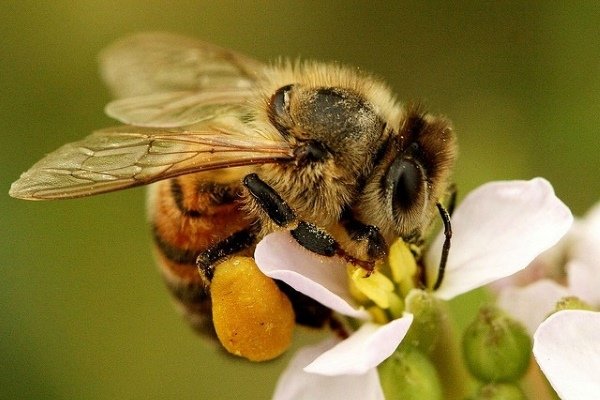

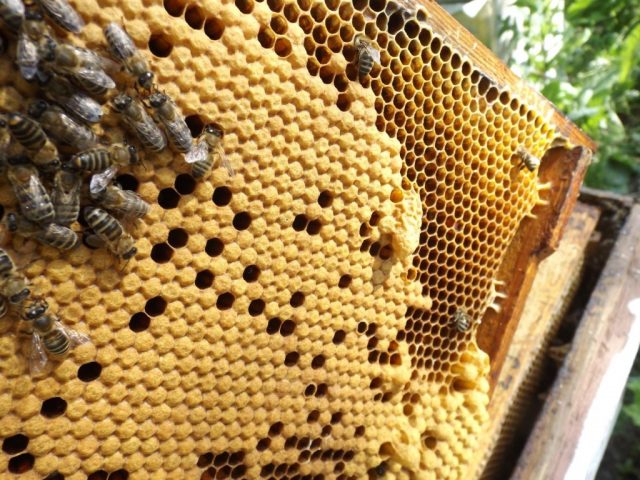

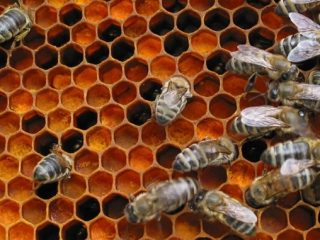
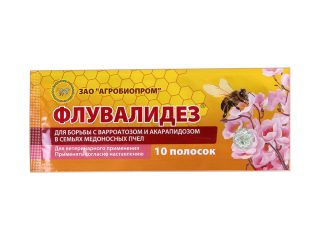
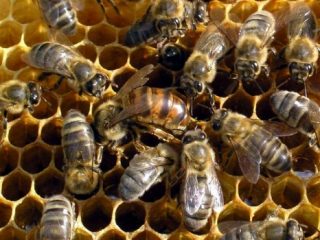
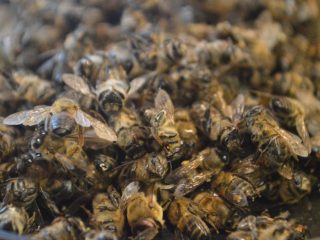
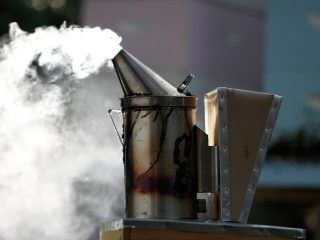

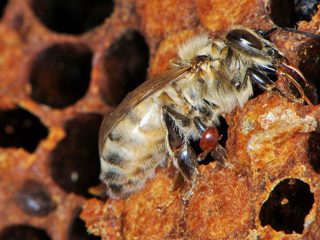
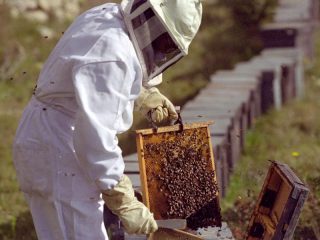

“In spring and summer, a bee colony should have 1 fertile queen, .....”
Fertile - how is it?
“The queen reproduces offspring.”
She doesn't reproduce anyone. She only lays eggs.
“Bee colonies maintain a strict hierarchy. The work process, continuously flowing inside and outside the hive, is distributed strictly according to age.”
Age distribution is not a hierarchy.
“Some of them die while fighting with other drones for the queen.” (?)
“A strong bee colony is characterized by high productivity, strong offspring, and longer life expectancy.”
And what is the life expectancy of a strong bee colony?